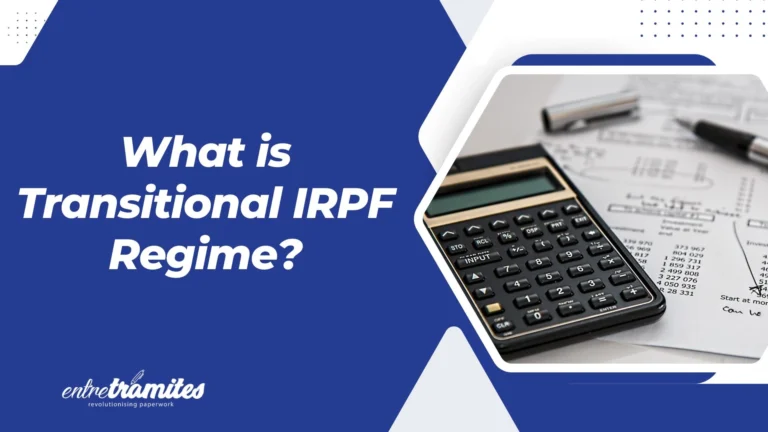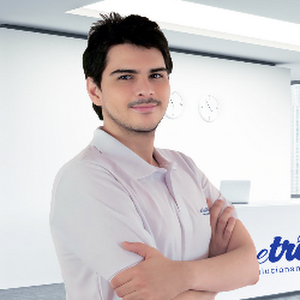An employee’s Contribution Basis is used to calculate what can be collected from retirement, unemployment, or sick leave. Here we will explain to you how to check your Contribution Basis Report from Social Security. In the following tutorial video you will see the step-by-step process:

Tutorial Video: How to consult the contribution basis report? – Step by Step
What is a Contribution Basis?
Note: all values in this guide are current in 2020.
Contribution Basis in the General Regime
Before diving into the procedure to request the Contribution Basis Report, we are going to analyze the contribution basis of employed workers (General Regime), which is the most common type.
However, as we will also explain at the end of the article, it must not be forgotten that the self-employed, household employees, farm workers and sea workers, have different regimes and concepts of contribution basis.
The legal concept of “contribution basis” (“base de cotización” in Spanish) is defined in detail in art. 147 of the LGSS, but in a very simplified way, we can define the contribution basis as the gross monthly remuneration of a worker, including prorated payments. Every year the law establishes minimum and maximum limits for the contribution basis in the different professional categories.
How and who pays Social Security?
In the General Regime, both the employer and the worker themself are obliged to pay a percentage of the contribution basis to Social Security. This is what is known as “quotes”. Let’s see it better with a simplified example.
On a monthly contribution basis of 1,000 euros, for example, both the company and the worker pay to Social Security:
- The company pays: 23.6% for common contingencies
- The worker pays: 4.7% for common contingencies, which are deducted from their payroll.
The company is in charge of paying the Social Security contributions, both those corresponding to it and those of the employee, which have been subtracted from the employee’s payroll.
If there were no other concepts to deduct, in the example the company would have to enter 283 euros into Social Security (236 euros of its contribution plus 47 of the worker’s contribution) and the worker would receive 953 euros from their payroll (1,000 – 47 of their share).
But reality becomes more complicated since many other concepts are deducted from the worker’s gross payroll: (unemployment, Fogasa, professional training, contributions for work accidents and occupational diseases, etc.). We explain it in more detail in the article What is the payroll? Basic Concepts.
Why is the worker’s Contribution Basis important?
It is essential because based on it you will receive some benefits from the Social Security system. A higher contribution base, higher benefits, and vice versa. For example:
- The unemployment benefit (Paro) is collected based on the contribution basis of the last 180 days that the worker was active.
- The contributory retirement is calculated in relation to the contribution basis of the last years of the worker.
- Temporary disabilities are also affected by the contributed amount.
If the contribution basis is very low, fewer unemployment/retirement benefits will be collected when you are on leave. This proportionality criterion is also applied in other regimes (self-employed, household employees, farm/sea workers, etc).
Everything that you collect outside the contribution basis, such as some bonuses (currently almost all of them are quoted, including the transportation bonus), per diem rates (unless they reach a certain amount), extraordinary commissions, or non-payroll payments, will not help you when it comes to receiving a retirement pension or unemployment benefits (Paro) in the future.
This problem is faced by workers who receive their salary or part of it as “cash-in-hand salary”, or by self-employed workers who choose a very low contribution basis because when they need a certain benefit they find that they receive insufficient amounts from it.
Other benefits, such as health care, do not take into account the contribution basis but do take into account the need to have contributed a certain number of days.
How to request the Contribution Basis Report?
The Contribution Basis Report can be obtained through the Social Security website, in the section Reports and Certificates.
To request the Contribution Basis Report you can access it with a username and password, SMS verification, or a digital certificate. The Contribution Basis Report can be downloaded online or received by postal mail at home.
The contribution basis and types of each year
Every year Social Security updates and publishes the bases and types of official contributions for the different regimes and types of activity. You can consult this information in Contribution Bases 2020. Sadly, there’s no available English version.
The contribution basis of all the regimes is detailed in the previous link. As an example, we will show the most common ones:
Basis of the General Social Security Regime:
| Contribution Group | Professional Categories | Minimum basis euros/month | Maximum basis euros/month |
|---|---|---|---|
| 1 | Engineers and Graduates. Senior management personnel not included in article 1.3.c) of the Workers’ Statute | 1,466.40 | 4,070.10 |
| 2 | Technical Engineers, Experts, and Graduated Assistants | 1,215.90 | 4,070.10 |
| 3 | Administrative and Workshop Managers | 1,057.80 | 4,070.10 |
| 4 | Non-Graduated Assistants | 1,050.00 | 4,070.10 |
| 5 | Administrative Officers | 1,050.00 | 4,070.10 |
| 6 | Subordinates | 1,050.00 | 4,070.10 |
| 7 | Administrative Assistants | 1,050.00 | 4,070.10 |
| Minimum bases euros/day | Maximum bases euros/day | ||
| 8 | First and Second Class Officers | 35.00 | 135.67 |
| 9 | Third Class Officers and Specialists | 35.00 | 135.67 |
| 10 | Labourer | 35.00 | 135.67 |
| 11 | Workers under eighteen years of age, regardless of their professional category | 35.00 | 135.67 |
| CONTINGENCIES | COMPANY | WORKERS | TOTAL |
|---|---|---|---|
| Common | 23.60 | 4.70 | 28.30 |
| Overtime Force Majeure | 12.00 | 2.00 | 14.00 |
| Other Extraordinary Hours | 23.60 | 4.70 | 28.30 |
(1) Type of common contingencies (IT): Workers with 65 years and 0 to 7 months of age and 36 years and 9 months or more of contributions, or 65 years and 8 months or more and 35 years and 6 months or more of contributions: 1.50 per 100 (1.25 per 100 -company- and 0.25 per 100 -worker-).
(2) In temporary contracts of a duration equal to or less than five days, the business fee for common contingencies is increased by 40 percent. It does not apply to the Special System for Agricultural Workers, included in the General Regime.
| UNEMPLOYMENT | COMPANY | WORKERS | TOTAL |
|---|---|---|---|
| General Type | 5.50 | 1.55 | 7.05 |
| Fixed-term contract Full Time | 6.70 | 1.60 | 8.30 |
| Fixed-term contract Part Time | 6.70 | 1.60 | 8.30 |
| COMPANY | WORKERS | TOTAL | |
|---|---|---|---|
| FOGASA | 0.20 | 0.20 |
| COMPANY | WORKERS | TOTAL | |
|---|---|---|---|
| PROFESSIONAL TRAINING | 0.60 | 0.10 | 0.70 |
| MAXIMUM | MINIMUM |
|---|---|
| 4,070.10 | 1,050.00 |
| CONTRIBUTION GROUP | MINIMUM BASE/HOUR |
|---|---|
| 1 | 8.83 |
| 2 | 7.32 |
| 3 | 6.37 |
| 4 to 11 | 6.33 |
Training contracts
The Social Security contribution for training contracts will consist of a single monthly fee. So it will be distributed as follows:
| Concept | Company | Employee | Total |
|---|---|---|---|
| For Common Contingencies | €42.56 | €8.49 | €51.05 |
| For Work Accidents and Occupational Diseases | Temporary Disability: €3.27 Disability, Death, and Survival: €2.58 | €5.85 | |
| Unemployment (*) | €57.75 | €16.28 | €74.03 |
| Salary Guarantee Fund | €3.23 | €3.23 |
(*) When it is appropriate to contribute for unemployment in training contracts, the contribution basis will be the minimum base corresponding to contingencies due to work accidents and occupational diseases, for the year 2020 (1,050.00 euros), to which the rate of 7.05% will be applied, distributed as follows: 5.50% paid by the company and 1.55% paid by the worker.
This contribution will also be applicable to:
- Scholars and researchers. Therefore, the Statute of research personnel in training is approved, during the first two years it will be carried out by applying the rules corresponding to the contribution in the training contracts, with respect to the contribution for common and professional contingencies.
- People assimilated to employed workers referred to in Royal Decree 1493/2011, of October 24, which regulates the terms and conditions of inclusion in the General Social Security Regime of the persons who participate in training programs, in development of the provisions of the third additional provision of Law 27/2011, of August 1, on the update, adaptation and modernization of the Social Security system, and people who carry out non-labor practices under of the provisions of Royal Decree 1543/2011, of October 31, which regulates non-labor practices in companies.
- There will be no obligation to contribute for contingencies of unemployment, salary guarantee fund, or professional training.
Let’s talk!
We want to listen to you and know what your questions are about the procedures you have to carry out. Count on the advice of our experts to clarify all your doubts.
In Entre Trámites we invite you to know about all our consultation services. Fill in our contact form and we will call you to help you as soon as possible, schedule your online consultation, or simply text our WhatsApp.
You may be also interested in:





